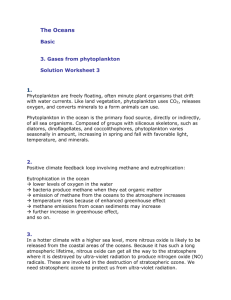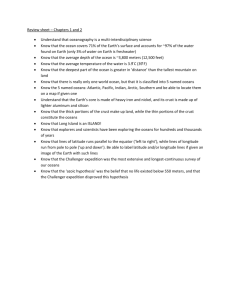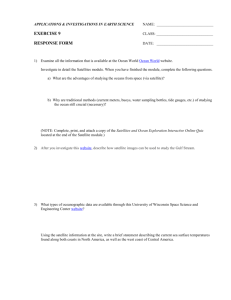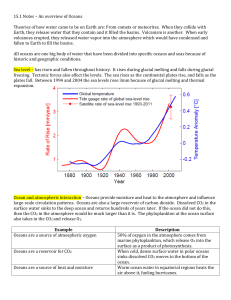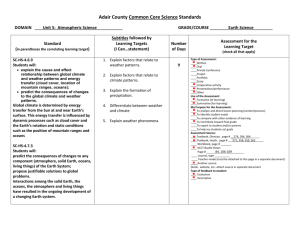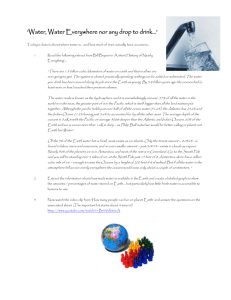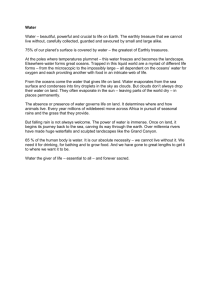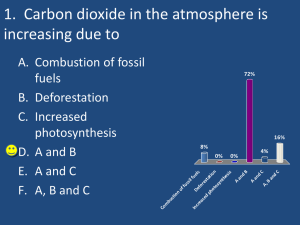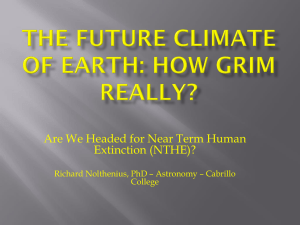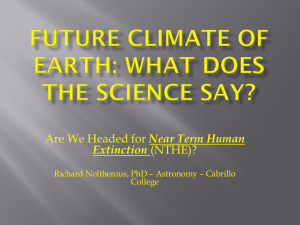The Oceans
advertisement
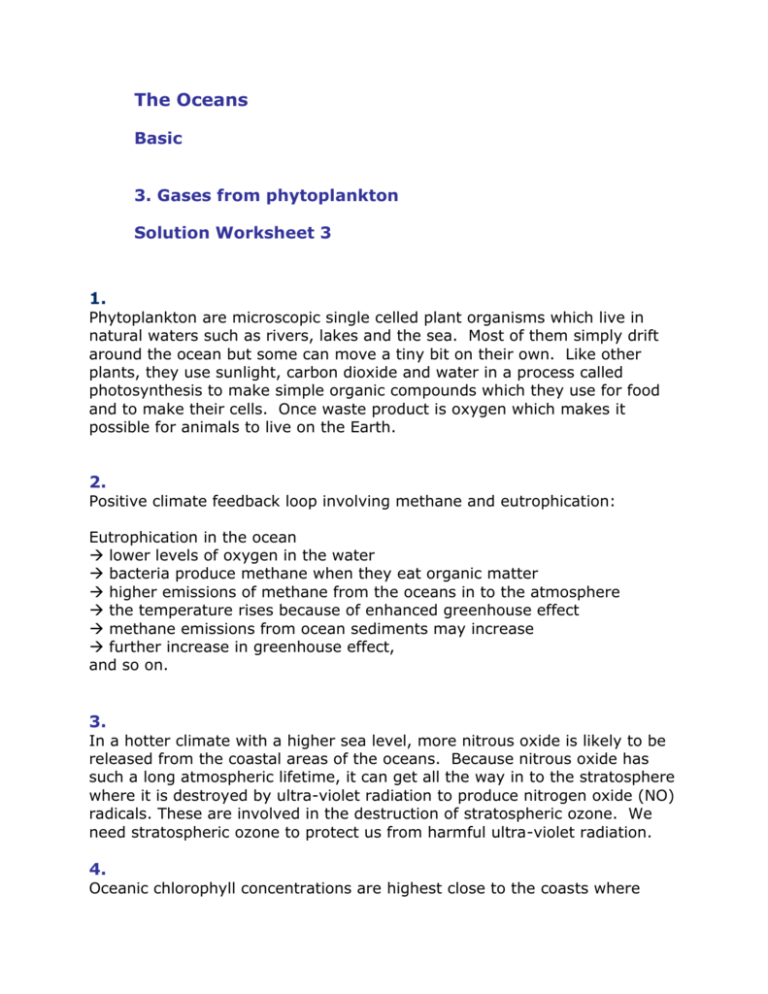
The Oceans Basic 3. Gases from phytoplankton Solution Worksheet 3 1. Phytoplankton are microscopic single celled plant organisms which live in natural waters such as rivers, lakes and the sea. Most of them simply drift around the ocean but some can move a tiny bit on their own. Like other plants, they use sunlight, carbon dioxide and water in a process called photosynthesis to make simple organic compounds which they use for food and to make their cells. Once waste product is oxygen which makes it possible for animals to live on the Earth. 2. Positive climate feedback loop involving methane and eutrophication: Eutrophication in the ocean lower levels of oxygen in the water bacteria produce methane when they eat organic matter higher emissions of methane from the oceans in to the atmosphere the temperature rises because of enhanced greenhouse effect methane emissions from ocean sediments may increase further increase in greenhouse effect, and so on. 3. In a hotter climate with a higher sea level, more nitrous oxide is likely to be released from the coastal areas of the oceans. Because nitrous oxide has such a long atmospheric lifetime, it can get all the way in to the stratosphere where it is destroyed by ultra-violet radiation to produce nitrogen oxide (NO) radicals. These are involved in the destruction of stratospheric ozone. We need stratospheric ozone to protect us from harmful ultra-violet radiation. 4. Oceanic chlorophyll concentrations are highest close to the coasts where inputs of nutrients from the rivers and the atmosphere are largest. Concentrations are smaller in the middle of oceans, far away from the external nutrient sources on land.
